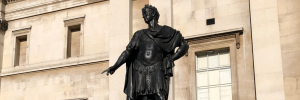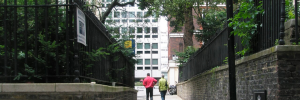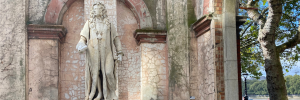The Royal Naval Hospital Greenwich: London’s Exception to Simplicity
Unlike other cities that flaunt architectural grandeur, London exhibits a subtler charm. Yet, The Royal Naval Hospital in Greenwich stands as a magnificent exception. A symbol of the nation’s maritime prowess, it reflects the royal legacy and serves as a testament to Britain’s naval history.
Greenwich offers one of the best vistas in Britain. From Island Gardens on the Thames’ north bank or from a riverboat, the grandeur of the area is undeniably captivating. The Royal Naval Hospital Greenwich is not a royal palace, but rather a retirement sanctuary for sailors injured at sea.
The idea of a majestic complex in Greenwich was the brainchild of King Charles II, who wanted to replicate the grandeur of Versailles. He appointed renowned architect John Gibb to construct a grand royal residence using white Portland stone. Unfortunately, due to insufficient royal funds, only a fraction of this vision was realized.
The Birth of The Royal Naval Hospital
Queen Mary, noticing the unfinished building, proposed using the site as a royal hospital. The frequent naval battles against the French and the rising naval power of England justified this need. Although Queen Mary passed away in 1694, her husband, King William III, continued her project.
When the Queen’s House was hidden behind the old Tudor palace, Queen Mary insisted it should be visible from the river. This requirement challenged the design of the new institution. Architect Wren was chosen for the task, but had to discard his initial designs to accommodate Mary’s request.
Wren integrated Gibb’s block into his design, creating a mirror image on the eastern side and two additional ranges to the south. Nicholas Hawksmoor, Wren’s clerk, Vanbrugh, and James Athenian Stewart (following a fire in the 18th century) all contributed to the project.
Greenwich and its hospital still served as an imposing entrance to London, advertising England’s naval prowess. More than just a display of power, it showed the significance of the sailors who safeguarded the nation’s liberties. Despite the opulence, the core purpose of the hospital remained: a charitable institution dedicated to the seafaring heroes of the nation.
A Unique Architectural Legacy
While some critics argue that the Royal Hospital lacks unity or is too grand for a charitable institution, its architectural ambition is unparalleled in Britain. With an impressive roster of architectural greats contributing to its design, Greenwich’s Royal Naval Hospital stands unrivalled in the grandeur of its architecture and vistas. This historic building continues to draw the admiration of both locals and visitors alike, serving as a glorious chapter in the tale of Britain’s naval history.
Charles II had grand visions of replicating the grandeur of Versailles in England. While he could not fulfil this dream due to monetary constraints, his unfinished building served as the foundation for what we now know as The Royal Naval Hospital Greenwich.
Importance of the Queen’s House in the Design
A significant constraint in the design of the new institution was Queen Mary’s insistence on preserving the view of the Queen’s House from the river. The architect, Wren, had to adjust his initial plans, resulting in a unique layout that incorporated Gibb’s existing block.
The Naval Hospital: A Testament to Britain’s Naval Power
While the hospital’s primary purpose was to serve as a sanctuary for injured and retired sailors, it became a symbol of Britain’s naval strength. Visitors sailing up the Thames would be greeted by the grandeur of the Royal Naval Hospital, reflecting the nation’s dominance on the seas.
The Royal Naval Hospital Greenwich is a testament to the collective genius of several architects. Wren, the lead architect, utilised Gibb’s block, creating a nearly identical building on its eastern side and then creating two further ranges behind these to the south. Hawksmoor, Vanbrugh, and Stewart all had a hand in shaping this iconic building.
Despite some critics arguing that the Royal Hospital’s grandeur is inconsistent with its charitable purpose, the building continues to awe visitors with its architectural prowess. The Royal Naval Hospital Greenwich stands as a monumental tribute to Britain’s maritime history and the brave sailors who guarded her liberties. It continues to be a testament to the nation’s unique approach to merging grandeur with purpose, making it a key landmark on Ludgate Hill.
Ian McDiarmid is a qualified City of London Tour Guide who delivers guided walks and private tours in London, including Greenwich. View all of Ian’s walking tours.




